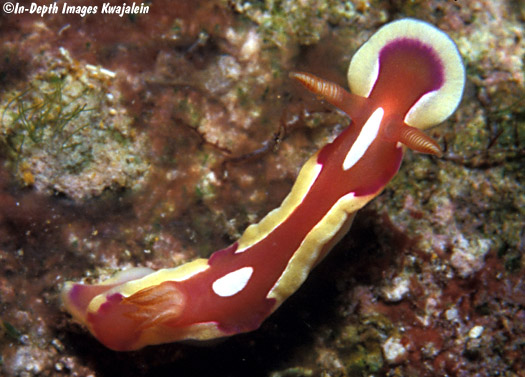
This gorgeous little gem's presence in the Marshalls is known from three specimens observed at Enewetak Atoll and two more at Kwajalein. The Enewetak specimens and one from Kwajalein were under dead coral on lagoon pinnacles at depths of 10 to 15 meters, while the other from Kwajalein was exposed on the seaward reef's algal mat in about 8m. This was originally described and given its name by a German nudibranch biologist named Bergh in the 1870s. Bergh described a large number of Indo-Pacific nudibranchs, but as far as I know, he did not see them alive in the flesh. He worked from preserved animals brought back from exploring expeditions. If he was lucky, someone on the voyage would have made a colored drawing of the animal. In the case of M. pusilla, he didn't even get the animal. Apparently, the specimen was lost somewhere along the way, but the colored drawing survived, and Bergh named the new species based only on the drawing. How times have changed. Nowadays, biologists insist on having the specimen in hand--preferably several of them, so they can determine a bit of the range of variation. And specimens from the original group used to describe the species must be placed into a museum so they can be reexamined in the future if need be. Many names from the 1800s are not usable because we can't really tell for sure what animals they go to. Fortunately for Bergh, M. pusilla is easily recognized. Even so, a related species on this site, Mexichromis sp. e290, has a similar color pattern.

Here the animal rears up on its tail, showing off the bottom of the foot and the two small oral tentacles in front.
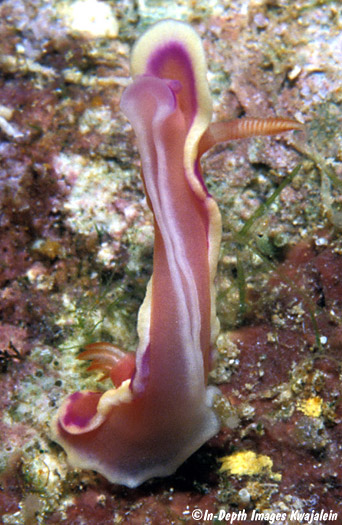
The three Enewetak specimens measured 12, 14, and 16mm in length.
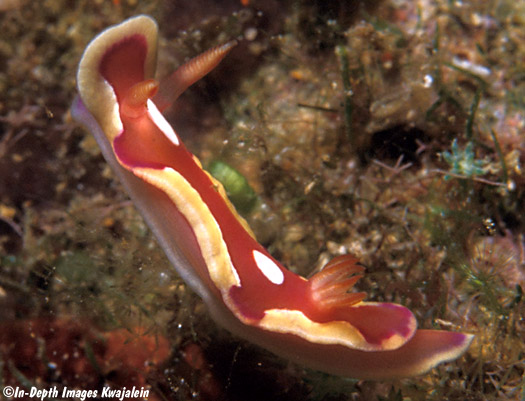
This one is in more of a resting state, so its margins have relaxed and curled up a bit.
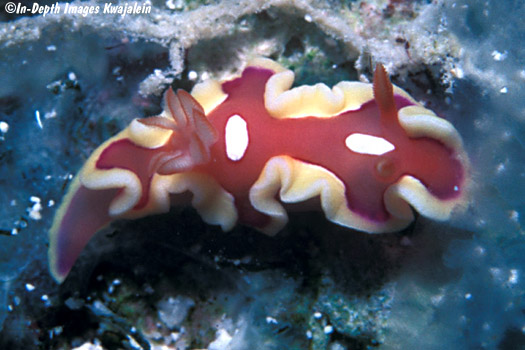
The small, less than 10mm specimen below was found under a rock on a lagoon pinnacle near Meck Pass at a depth of about 7m on 12 September 2016.
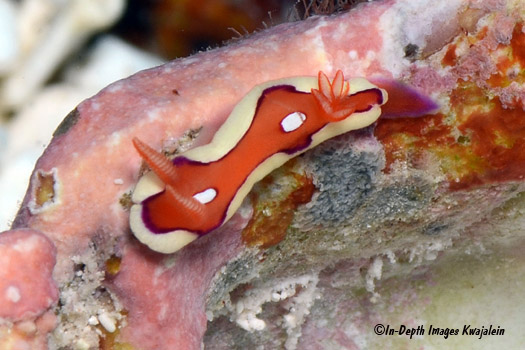
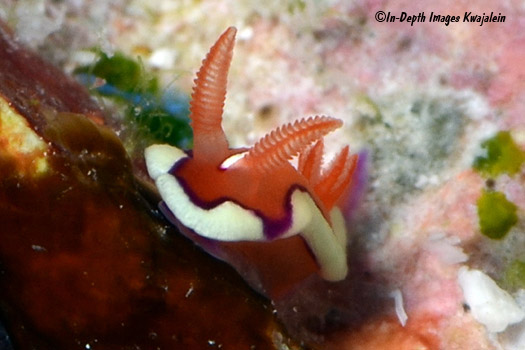
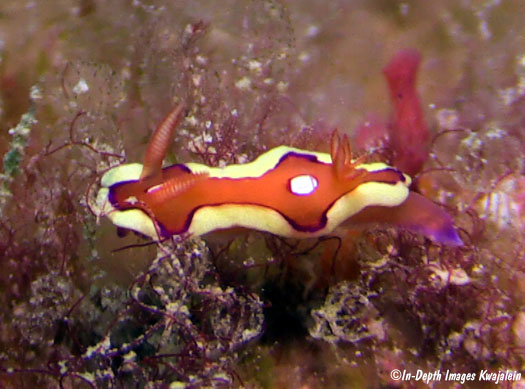
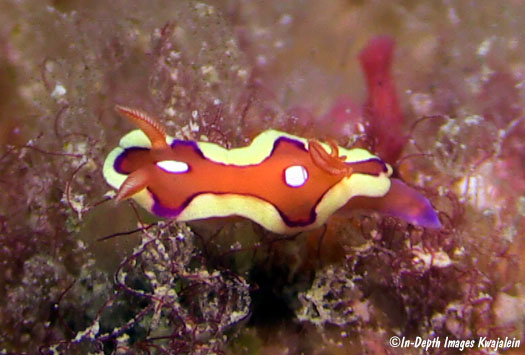
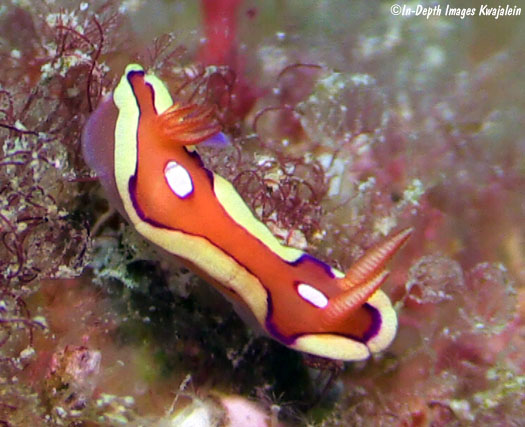
Created 19 December 2005
Updated 2 October 2016